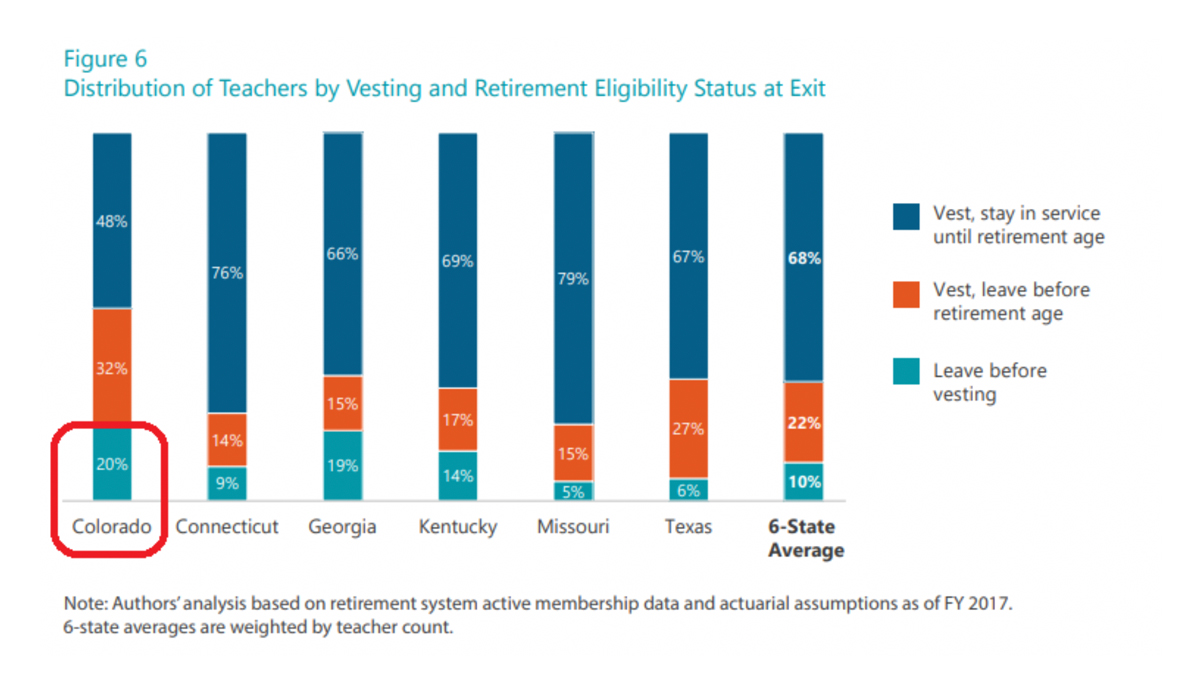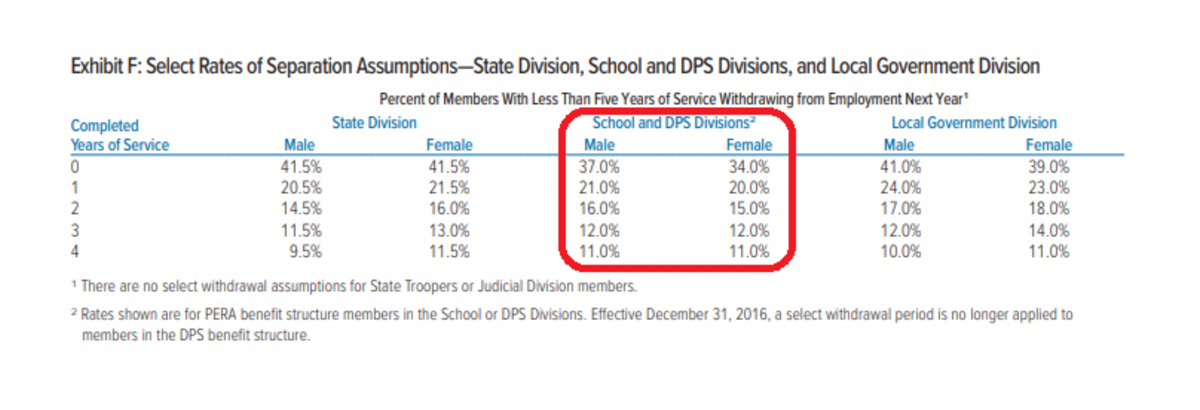
The best way to measure a retirement plan’s adequacy is to look at how it treats all workers who come through the system.
This issue seems simple, but it is at the heart of the debate over teacher pensions. Last month, Nari Rhee and Leon F. Joyner Jr. released a report for the UC Berkeley Center for Labor Research and the National Institute on Retirement Security (NIRS) that makes a counter argument—that we should measure a retirement plan’s adequacy by how it treats its current workers. Their approach may appear seductive at first glance, but it turns out to be misleading once you dig into its implications.
Let’s start with the methodology, which underpins the entire argument. Rhee and Joyner gathered data on current teacher pension plan participants in six states, Connecticut, Colorado, Georgia, Kentucky, Missouri, and Texas, and then they applied each state’s actuarial assumptions to estimate how many teachers in those states would reach various retirement thresholds. Based on these calculations, they estimate that two-thirds of current teachers in these states will teach at least 20 years in the same state. They then argue that these findings make traditional pension plans a better choice for the majority of teachers.
Ok, sounds simple enough, right? The problem is that by using only a snapshot of the current active teacher workforce in these states as their starting point, they fail to account for the totality of teacher experiences.
Let me give a couple examples to illustrate why their approach is the wrong unit of measurement for tracking retirement security.
For years the education sector argued about graduation rates. Schools and states would report point-in-time dropout rates for any given year, but these artificially inflated any given student’s chance of graduating from high school, and many advocates and civil rights leaders were concerned about the total number of students who left high school without graduating between 9th and 12th grades. This was a long-running debate in the education sector, but ultimately policymakers decided the proper measurement was to look at how many incoming freshmen graduated four (or five or six) years later, because it gave a more accurate count of students and their chances for success.
This is the fundamental problem with Rhee and Joyner’s approach. They take a similar point-in-time approach by looking at all current teachers. Sure, some of them are new teachers in their early years on the job. But the current workforce also includes 15-, 20-, and 30-year veterans who have already persisted for many years. This matters in a field with high early-career turnover rates, which Rhee and Joyner acknowledge in another part of their paper. But Rhee and Joyner’s main analysis ignores anyone who has already left the teaching profession, and it is inherently flawed due to this “survivorship bias.”
This isn’t a theoretical problem. Consider Figure 6 from their report, pasted below. It purports to show the distribution of teachers in each state by when they’ll leave the teaching profession, and whether they’ll “vest” into their state’s pension plan or stay long enough to meet the state’s minimum retirement age. As context, in the median state it takes seven years for a teacher to vest. For simplicity’s sake, focus just on the bottom bar, the percentage of teachers Rhee and Joyner say will leave before vesting. Take Colorado, for example. In Colorado, Rhee and Joyner say that only 20 percent of teachers will leave before vesting, which is five years in Colorado.

But this result is impossible. According to the same official state projections that Rhee and Joyner apply to their sample, Colorado’s teacher pension plan assumes that 37 percent of males and 34 percent of females will leave in their first year, let alone make it to five years. Rhee and Joyner are trying to tell us that twice as many teachers will vest at 5 years than Colorado says will stay for one year.

I could repeat this same exercise for every state, with similar results, and it’s all due to the underlying sample that Rhee and Joyner start with. Looking only at the current teacher workforce has led them to impossible conclusions. Sure, Colorado’s pension plan looks ok for its current workers, but that’s only if we ignore all the people who have already left. It’s sort of like making inferences about tenure in the NFL by only looking at current rosters. For every statistical rarity like the 41-year-old Tom Brady, there are dozens and dozens of players who quietly shuffle in and out of the league.
Rhee and Joyner are certainly right to note that early-career workers have much higher rates of turnover than mid-career workers, and it’s reasonable to ask whether we should treat all workers the same in any retirement scheme. But they’ve taken that argument too far. The teaching profession is too large a group of American workers, and too important, to simply ignore all the ones who give five or ten or even 20 years of service and leave. Those teachers don’t do that well under current pension plan systems, and Rhee and Joyner don’t seem to have much sympathy for them.
As my colleagues and I discuss over at Teacherpensions.org all the time, there is plenty of room for well-intentioned people to disagree about the best remedies to our teacher retirement problems. And the choices facing policymakers are a lot more complicated than just pensions versus 401(k)-style plans. Those are important and lively debates. But it’s important that those conversations are underpinned by accurate analyses of the various dimensions of the issue. This most recent one is not.
Chad Aldeman is a principal at Bellwether Education Partners.


